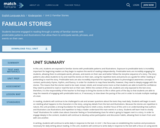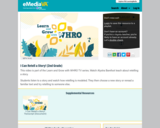
In this unit, students are exposed to familiar stories with predictable patterns and illustrations. Exposure to predictable texts is incredibly important for beginning readers as they begin to explore the world of reading independently. Predictable texts are incredibly engaging for students, allowing them to anticipate words, phrases, and events on their own and better follow the storyline sequence of a story. The story patterns also allow students to try and read the stories on their own, using the repetitive texts and pictures as a guide for either reading or pretending to read the story. Predictable texts are also incredibly important for exposing students to phonological awareness concepts in context, particularly rhyme, rhythm, and fluency. In order for students to reap these benefits, however, they need to deeply engage with the stories. This means that the stories need to be read, reread, retold, and reread some more so that students are able to build the confidence they need to pretend to read or read the text on their own. Within the context of this unit, students are only exposed to the text once; therefore, it is the responsibility of the teacher to find ways to bring the stories to life in other parts of the day so that students are able to reap the rewards of engaging with predictable texts or, if necessary, to slow down the pacing of the unit in order to include multiple readings of a text.
In reading, students will continue to be challenged to ask and answer questions about the texts they read daily. Students will begin to work on retelling what happens to the characters in the story, using key details from the text and illustrations. Because the stories are repetitive in nature, this unit provides a strong foundation for teaching how to retell a story. Another focus of this unit is on understanding how authors and illustrators use illustrations and repetition to help a reader understand the main events in a story. Students will learn how to closely'read' illustrations for subtle clues about character feeling or foreshadowing clues for what is going to happen next in a story. In order to engage deeply in the content, students will continue to develop active participation and discussion habits, allowing them to learn from and with one another.
In writing, students will continue to write daily in response to the text. In Unit 1, the focus was on establishing the routines and procedures necessary for daily writing about reading. In this unit, students will continue to write daily in response to the text with a focus on using words and pictures to correctly answer the question.
- Subject:
- Communication and Multimodal Literacy
- English
- Fiction
- Reading
- Writing
- Material Type:
- Assessment
- Homework/Assignment
- Lesson Plan
- Provider:
- Match Fishtank
- Provider Set:
- Fishtank ELA
- Date Added:
- 01/01/2017




